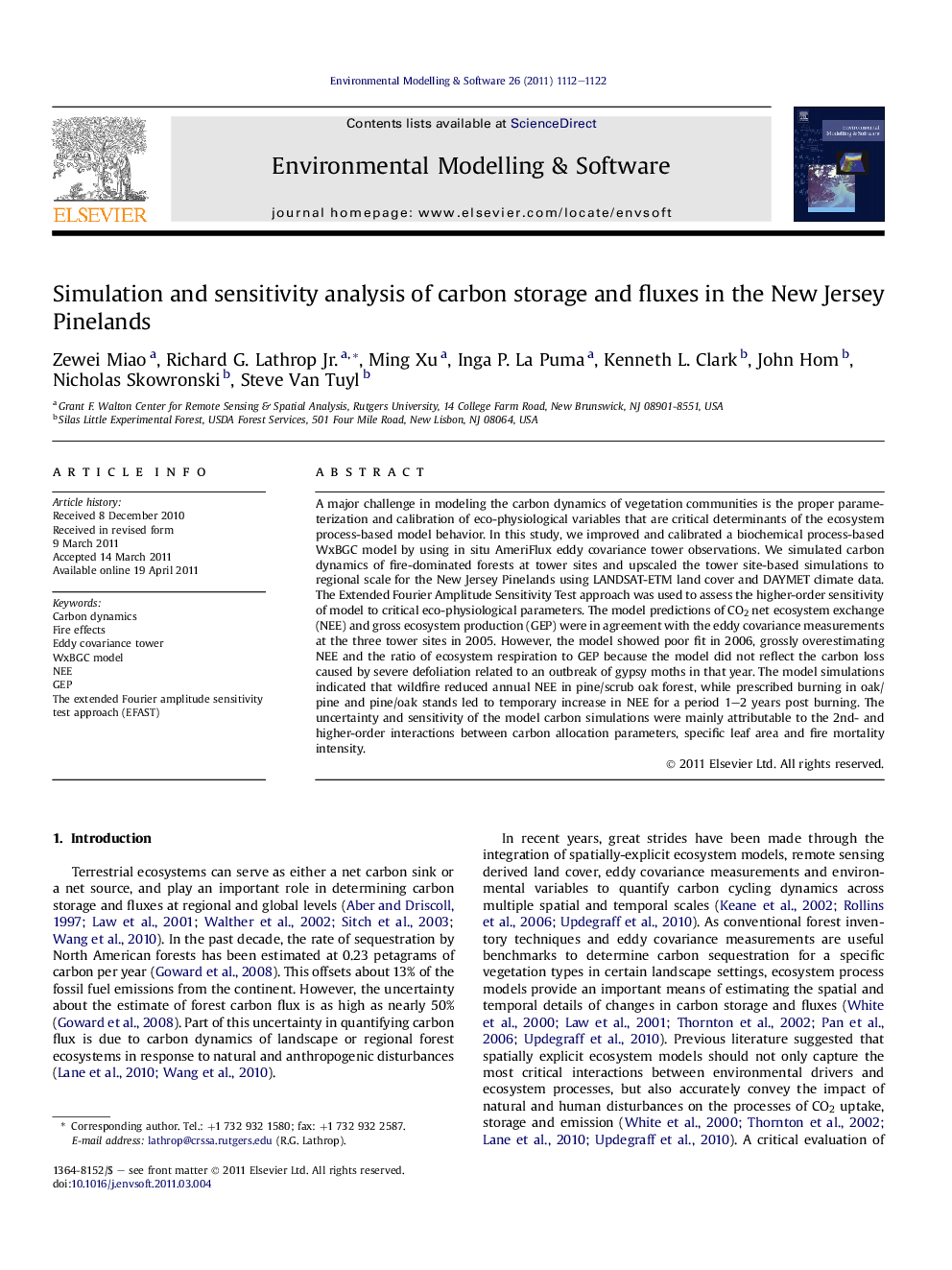| Article ID | Journal | Published Year | Pages | File Type |
|---|---|---|---|---|
| 10370780 | Environmental Modelling & Software | 2011 | 11 Pages |
Abstract
A major challenge in modeling the carbon dynamics of vegetation communities is the proper parameterization and calibration of eco-physiological variables that are critical determinants of the ecosystem process-based model behavior. In this study, we improved and calibrated a biochemical process-based WxBGC model by using in situ AmeriFlux eddy covariance tower observations. We simulated carbon dynamics of fire-dominated forests at tower sites and upscaled the tower site-based simulations to regional scale for the New Jersey Pinelands using LANDSAT-ETM land cover and DAYMET climate data. The Extended Fourier Amplitude Sensitivity Test approach was used to assess the higher-order sensitivity of model to critical eco-physiological parameters. The model predictions of CO2 net ecosystem exchange (NEE) and gross ecosystem production (GEP) were in agreement with the eddy covariance measurements at the three tower sites in 2005. However, the model showed poor fit in 2006, grossly overestimating NEE and the ratio of ecosystem respiration to GEP because the model did not reflect the carbon loss caused by severe defoliation related to an outbreak of gypsy moths in that year. The model simulations indicated that wildfire reduced annual NEE in pine/scrub oak forest, while prescribed burning in oak/pine and pine/oak stands led to temporary increase in NEE for a period 1-2 years post burning. The uncertainty and sensitivity of the model carbon simulations were mainly attributable to the 2nd- and higher-order interactions between carbon allocation parameters, specific leaf area and fire mortality intensity.
Keywords
Related Topics
Physical Sciences and Engineering
Computer Science
Software
Authors
Zewei Miao, Richard G. Jr., Ming Xu, Inga P. La Puma, Kenneth L. Clark, John Hom, Nicholas Skowronski, Steve Van Tuyl,
